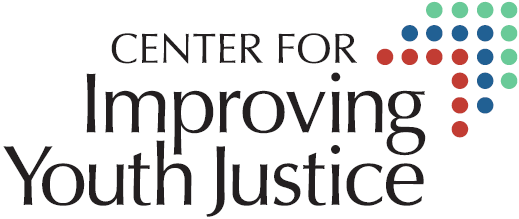The Center for Improving Youth Justice’s (CIYJ) Communication Director, Kapiolani Kassal, had the privilege of interviewing Kimbla Newsom, a dedicated researcher whose PhD thesis delves into the profound subject of Experiences of Youth in Confinement: Pathways of Racial Ethnic Disparities in Juvenile Corrections. In this enlightening conversation, Newsom unpacks the nuanced facets of her research, shedding light on the intricate pathways that contribute to racial and ethnic disparities within the youth justice systems. Her insightful analysis not only addresses the challenges faced by youth in confinement but also underscores the imperative need for understanding and rectifying systemic disparities in the pursuit of equitable and just youth justice practices. Read on as we engage with Newsom’s expertise to gain deeper insights into the complex dynamics shaping the experiences of justice-involved young people.
Kimbla, talk to me about the idea for your thesis and how you went about utilizing our research.
Throughout the PhD program that I’ve been involved with my focus has primarily been on the juvenile justice system, I was the only one in the department that was focusing exclusively on the youth justice system. I worked within the youth justice system for over 20 years now, and my passion has been to go back into the field and provide services and consulting work for those particular areas. Throughout my time working in the system as a practitioner, looking at the system itself, there’s a lot of disparities in the system and has it relates specifically to kids of color being overrepresented in the system. During my time in the field, research I’ve done and looking at the data to see what are those reasons and what can I do to help and assist, I felt it was an ideal situation for me to focus my dissertation on Racial and Ethnic Disparities in the System.
Having looked at the data and findings what was something that really impacted or jumped out to you?
I went in really looking at how the experiences really differed between race and ethnicity within the justice system and hypothesizing that youth of color experience more confinement, locked up longer and experience fewer connections upon reentry to community services as they transition, sadly, I did find support through the data for all three of those hypothesizes. Especially when it comes to Black kids in all three areas, they were overrepresented or experienced more detrimental outcomes than some of the other youth. I suspected those would be the findings but nonetheless when you look at the data and crunch the numbers, you’re able to actually prove those hypotheses and seeing them on paper is impactful. I will say, I was pleased to see the gap or rather the disparity was not as significant, I think it really attests to the sites that participate in PbS and they’re intentional about creating better outcomes for kids, improving conditions of confinement for kids and really trying to use best practices. It was really pleasing to see that while disparities exist in the system, there’s progress being made, especially with those sites that participate in PbS.
Talk to me about the Performance-based Standards Researcher Database and how it helped you complete your study.
First, I have to say the wealth of data that you all have is something that’s unique. As a researcher, a lot of times you’re limited in data sets and information that you’ll receive from organizations. There was so much data that was available and then over periods of time. I used a 10-year period of time and that’s something that really helps with the richness of the data and being able to get to larger numbers. The validity and reliability of the numbers was really great. Additionally, I think because the type of data that [CIYJ] has from the administrative forms related to the facilities, climate surveys for staff and youth as well as youth records being able to triangulate all that information and make sure you’re not just focusing on one area but instead looking at how does it all connect to different areas. It was awesome to be able to use thousands of records over that period of time and in many situations you’re very limited in the amount of data or access but not with the Researcher’s Database.
Why do you think it’s so important to look at the data specifically from a race/ethnicity perspective?
It’s important because people have an opinion and see things and think there’s an issue with a particular area. Oftentimes what happens is that people are tapping into a symptom versus root issues and data allows you to get to root issues. I’ve worked in facilities and juvenile justice for 20 years; I can see with my eyes more kids of color here, more kids locked in their rooms and less in educational instruction or drug treatment that are of color. My observations are one thing but to be able to say, ‘Hey, we have the data to support that as well.’ The data can help and it’s not what I heard but what the data says and that research can get to advocacy work and better outcomes. The data also shows the disparities exist and if we know it exists then we can move towards what we can do to try to reduce and eliminate the issue.
Now that we have the data what can we do to utilize it and put it into work and into practice?
It’s really about creating a sense of community. We have to begin with the end in mind. Majority of people are going to get released, it’s only a small percentage of people that are on death row, knowing that the person can get released and live next door to me, I would rather them receive rehabilitative services when they’re locked up versus being caged like an animal and then when they get out, they’re going to probably still act that way. The Tough On Crime slogan sounds good but the research doesn’t support keeping people locked up longer or expanding prison sizes. If you’re not providing transitional services to help them stay in communities they’ll continue to cycle in and out.
When it comes to kids in particular, they don’t have a choice what they’re able to receive, what they have access to or what they’re born to. They don’t make those specific decisions and we don’t want to do more harm to kids, we want to get to better outcomes, you have to look at the system and see the research shows that [utilizing certain methods] results in worst outcomes for people when you see these disparities.
It’s not always that they committed more crimes, a lot of times it’s equally, they’re being treated differently and that’s why you’re seeing the negative outcome.
We all need to have compassion, allow the data to paint a picture, tell a story and if you make it plain for people and connect the dots that expanding prison beds or locking people up longer does not result in safer communities the data becomes less overwhelming and makes more sense.
When you have minority or marginalized communities, kids are going to return back to those communities when they’re released from facilities. The reality is that taxpayers pay a lot of money for kids and adults to be locked up. We should want our money to go towards efforts that are going to result in better outcomes for young people versus wasting money and cycling people in and out of the system.

